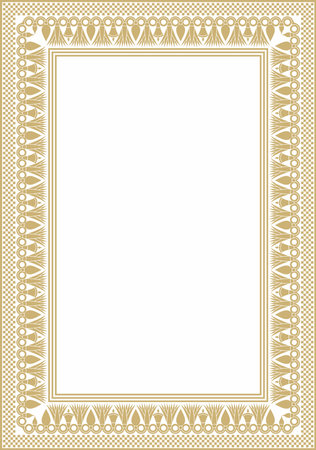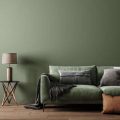Introduction to Victorian Era Interior Design
The Victorian era, spanning from 1837 to 1901 during Queen Victoria’s reign, marked a transformative period in British history. It was an age of industrial progress, imperial influence, and social evolution, all of which left a distinct imprint on the nation’s cultural identity. This era witnessed the rise of a burgeoning middle class, eager to showcase their newfound prosperity through ornate architecture and elaborate home interiors. As a result, Victorian interior design became synonymous with elegance, comfort, and opulence, setting enduring standards for British homes.
Today, the influence of Victorian design remains prevalent across the UK. From grand townhouses in London to quaint terraces in Manchester, many homeowners continue to celebrate the timeless charm and sophistication that this era introduced. The Victorian aesthetic is revered not only for its intricate craftsmanship and decorative detail but also for its ability to blend luxury with practicality—a hallmark that continues to shape British interior trends.
Cultural Significance of the Victorian Period
Aspect |
Impact on British Culture |
|---|---|
Industrialisation |
Enabled mass production of furniture and decorative items, making stylish interiors accessible to more households. |
Empire Expansion |
Introduced exotic materials and influences into British homes, enriching the design palette. |
Social Mobility |
Empowered the middle class to express status through home décor and architectural choices. |
The legacy of Victorian interior design persists because it bridges traditional British sensibilities with universal aspirations for comfort and beauty. Whether renovating a period property or seeking inspiration for modern living spaces, understanding the roots of Victorian style offers valuable insight into why these design principles remain integral to the fabric of British homes today.
Architectural Elements and Layout
When examining the enduring allure of Victorian Era interior design, one must first appreciate its defining architectural elements. The Victorian period in Britain—spanning from 1837 to 1901—was marked by a sense of grandeur, with homes designed to showcase both status and artistry. British townhouses, particularly in London and other prosperous cities, set the tone for much of the era’s residential architecture. These structures embraced a series of key features that remain highly sought after in today’s property market.
Key Structural Features of Victorian Interiors
| Feature | Description | British Context |
|---|---|---|
| High Ceilings | Rooms often featured ceilings well above modern standards, fostering a sense of space and airiness. | Symbolic of affluence; common in terrace houses across the UK, especially in affluent neighbourhoods. |
| Ornate Cornices & Mouldings | Elaborate plasterwork with intricate floral or geometric patterns adorned ceiling edges and wall junctions. | A statement of craftsmanship, these details are still prized in period properties throughout the British Isles. |
| Bay Windows | Large, protruding windows that not only maximised natural light but also provided scenic street views and additional living space. | A hallmark of British Victorian terraces and detached homes, particularly in urban environments like London and Manchester. |
| Sash Windows | Vertically sliding timber windows, often with multiple panes separated by glazing bars. | An iconic feature of British architecture; original sash windows are highly valued for their historic character. |
| Fireplaces as Focal Points | Each principal room typically centred around an ornate fireplace, often crafted from marble or cast iron. | Reflecting the importance of hearth and home in Victorian Britain, many fireplaces remain operational or restored in period homes today. |
The Influence of British Townhouses on Layouts
The typical Victorian townhouse was arranged over several storeys, with clearly delineated public and private spaces. Grand entrance halls led to formal reception rooms on the ground floor—ideal for entertaining guests—while upper floors housed family bedrooms. Servant quarters were discreetly tucked away, often on the top floor or in basement levels. This layout reflected not just social hierarchies but also the British penchant for privacy and orderliness within domestic life.
Investment Perspective: Enduring Appeal in the Modern Market
From an investment standpoint, these structural features continue to underpin the value proposition of Victorian homes across the UK. High ceilings and period detailing command premium prices due to their rarity and association with timeless British elegance. For buyers seeking both historical character and adaptable living spaces, authentic Victorian layouts offer unmatched flexibility—making them a perennial favourite among discerning homeowners and investors alike.

3. Characteristic Features and Colour Palettes
The Victorian era is renowned for its lavish attention to detail and expressive design motifs, elements that continue to underpin British interior elegance. At the heart of Victorian interiors were intricate patterns and decorative embellishments, reflecting both technological advances and a desire for opulence. Popular motifs included botanicals, such as ferns and roses, Gothic tracery, damask, and oriental influences. These were often displayed through wallpapers, textiles, and even ceiling cornices, creating a layered and immersive aesthetic.
Motifs & Decorative Patterns
| Motif/Pattern | Description | Typical Application |
|---|---|---|
| Botanical Prints | Florals, vines, and ferns inspired by natural sciences | Wallpaper, upholstery, carpets |
| Damask | Rich woven pattern with symmetrical designs | Curtains, wall coverings |
| Gothic Revival | Pointed arches and quatrefoils reminiscent of medieval architecture | Mouldings, fireplace surrounds |
| Oriental Influences | Chinoiserie and Japanese-inspired prints | Ceramics, screens, accent fabrics |
Traditional British Colour Schemes
The Victorian palette was sophisticated yet bold, balancing deep hues with lighter accents to create an inviting yet dramatic atmosphere. Typical colours included rich burgundies, bottle greens, navy blues, and earthy ochres—often offset by creams or gold leaf highlights. These choices not only expressed wealth but also catered to the British climate by adding warmth to often grey urban settings.
| Main Colour | Tone/Effect | Era’s Expression |
|---|---|---|
| Burgundy & Maroon | Warmth and luxury; formal ambience | Symbol of prosperity; suitable for drawing rooms or libraries |
| Bottle Green & Olive | Connection to nature; calming depth | Pays homage to British gardens; popular in dining rooms and studies |
| Navy Blue & Royal Blue | Regality; serene sophistication | A nod to British aristocracy; common in bedrooms and reception areas |
| Creams & Gold Leaf Accents | Lifts darker tones; adds lightness and glamour | Eases heavy colour schemes; enhances ornate plasterwork or cornices |
| Earthy Ochres & Mustard Yellows | Grounding warmth; rustic charm amidst opulence | Adds variety; reflects Victorian eclecticism in informal spaces like morning rooms or conservatories |
The Era’s Opulent Taste Expressed Through Design Choices
This distinctive approach to colour and patterning not only reflected the Victorians’ fascination with global influences but also their desire for comfort within the home. The deliberate layering of textures—velvet drapes against patterned wallpaper or elaborate rugs over polished wood floors—created a sense of abundance that remains synonymous with timeless British elegance. By understanding these characteristic features and palettes, investors and homeowners alike can appreciate how Victorian interiors continue to inspire contemporary design with their enduring richness.
4. Materials and Textures
The Victorian era is renowned for its rich layering of materials and textures, each chosen to exude sophistication and demonstrate the household’s status. This enduring aesthetic continues to shape British interiors, with homeowners and investors alike recognising the value these materials add both visually and in terms of long-term appeal.
Quintessential Victorian Materials
| Material | Description | Enduring Appeal in the UK |
|---|---|---|
| Hardwoods (Mahogany, Oak, Walnut) | Favoured for their durability and deep, warm tones, hardwoods were commonly used in flooring, panelled walls, and statement furniture pieces. | Still prized for timelessness and resilience, adding value and prestige to period properties. |
| Marble | Associated with luxury, marble featured in fireplaces, tabletops, and entryways. | Sought-after for its classic elegance; original marble details are a major selling point in the UK property market. |
| Velvet & Damask | Lavish fabrics like velvet and damask adorned upholstery and draperies, offering tactile richness and visual depth. | Frequently reinterpreted in modern British homes for a touch of grandeur; remains a staple in high-end interior design. |
| Brass | Used extensively in fixtures such as door handles, lighting, and curtain poles to bring warmth and subtle shine. | Vintage brass accents are popular among renovators aiming to retain authentic period charm. |
The Allure of Layered Textures
Victorian interiors masterfully combined these materials to create rooms brimming with character. Heavy drapes alongside polished wood floors or intricate brass fittings set against plush textiles foster a sense of luxury that remains attractive to British homeowners today. The tactile experience—soft velvets against cool marble or glossy wood—is a hallmark of Victorian design that continues to inspire modern interpretations across the UK’s property landscape.
5. Furnishings and Decorative Accessories
Victorian interior design is instantly recognisable through its distinctive furnishings and decorative flourishes, each echoing the era’s penchant for opulence and intricate craftsmanship. British homes of the period were curated with an eye for both comfort and a display of social standing, resulting in interiors layered with rich textures, antique finishes, and iconic statement pieces.
Signature Victorian Furniture
The furniture of the Victorian era was typically robust, ornate, and made from dark woods such as mahogany, rosewood, or walnut. Upholstery was often deeply buttoned, using sumptuous fabrics like velvet or brocade. The following table highlights key furniture types found in traditional Victorian settings:
| Furniture Piece | Description | Typical Material |
|---|---|---|
| Chesterfield Sofa | Deep-buttoned back and rolled arms; classic British design | Leather or velvet upholstery |
| Carved Sideboard | Heavily ornamented with motifs; used for displaying china and silverware | Mahogany or walnut |
| Balloon-Back Chair | Rounded backrest; decorative carving details | Polished wood with plush fabric seat |
Lighting: Ambience and Artistry
Lighting in the Victorian home was both practical and decorative. Chandeliers adorned formal rooms, while oil lamps and later gas lighting added warmth and atmosphere. Cut glass pendants, etched shades, and brass fittings contributed to an unmistakably British ambiance.
British Antiques & Decorative Details
No Victorian interior is complete without an array of antiques and accessories. Ornate mirrors with gilded frames amplified natural light and gave rooms a sense of grandeur. Fireplaces—often carved from marble—served as focal points in living spaces, flanked by fenders and fire screens for both safety and style. Walls were adorned with framed artworks—landscapes, portraits, or botanical prints—that reflected personal taste and cultural sophistication.
Key Decorative Accessories:
- Cherished porcelain figurines displayed on mantels or cabinets
- Embroidered cushions and throws adding layers of comfort
- Lace doilies atop tables for a delicate touch
The interplay between these furnishings and accessories encapsulates timeless British elegance, ensuring that the spirit of the Victorian era endures within contemporary interiors that value tradition, character, and investment-worthy design.
6. Timeless Appeal and Modern Adaptations
The enduring charm of Victorian interior design continues to captivate British homeowners and property investors alike. In today’s dynamic property market, the blending of quintessential Victorian features with contemporary living standards has become a hallmark of sophisticated British homes. This seamless fusion not only preserves the elegance of the era but also enhances long-term value and appeal.
How Modern British Homes Embrace Victorian Elements
Many UK homeowners are keen to retain key Victorian characteristics—such as ornate cornicing, high ceilings, original fireplaces, and bay windows—while adapting spaces for modern lifestyles. The result is a unique balance between period authenticity and everyday functionality.
Popular Strategies for Blending Old and New
| Victorian Feature | Modern Adaptation |
|---|---|
| Decorative Mouldings & Cornices | Contrasted with minimalist wall colours and smart lighting controls |
| Original Fireplaces | Restored for use or repurposed as decorative focal points in open-plan living areas |
| Sash Windows | Upgraded with double glazing for energy efficiency while preserving heritage aesthetics |
| Patterned Floor Tiles | Pulled through to contemporary kitchens and bathrooms for visual continuity |
Sustaining Value in the Property Market
The integration of Victorian style within modern settings not only delivers timeless elegance but also strengthens a property’s position on the UK market. Buyers increasingly seek homes that celebrate period features yet meet present-day demands, such as energy efficiency and flexible layouts. According to recent market analysis, properties that successfully blend Victorian character with up-to-date amenities often command premium prices and experience stronger buyer demand across Britain’s competitive regions.
Conclusion: The Enduring British Aesthetic
The adaptive approach adopted by British homeowners and designers ensures that Victorian interior design remains both relevant and revered. By marrying historical detail with contemporary innovations, these homes offer a timeless sanctuary that appeals to discerning tastes and supports robust investment value—a true testament to the lasting legacy of British elegance.


